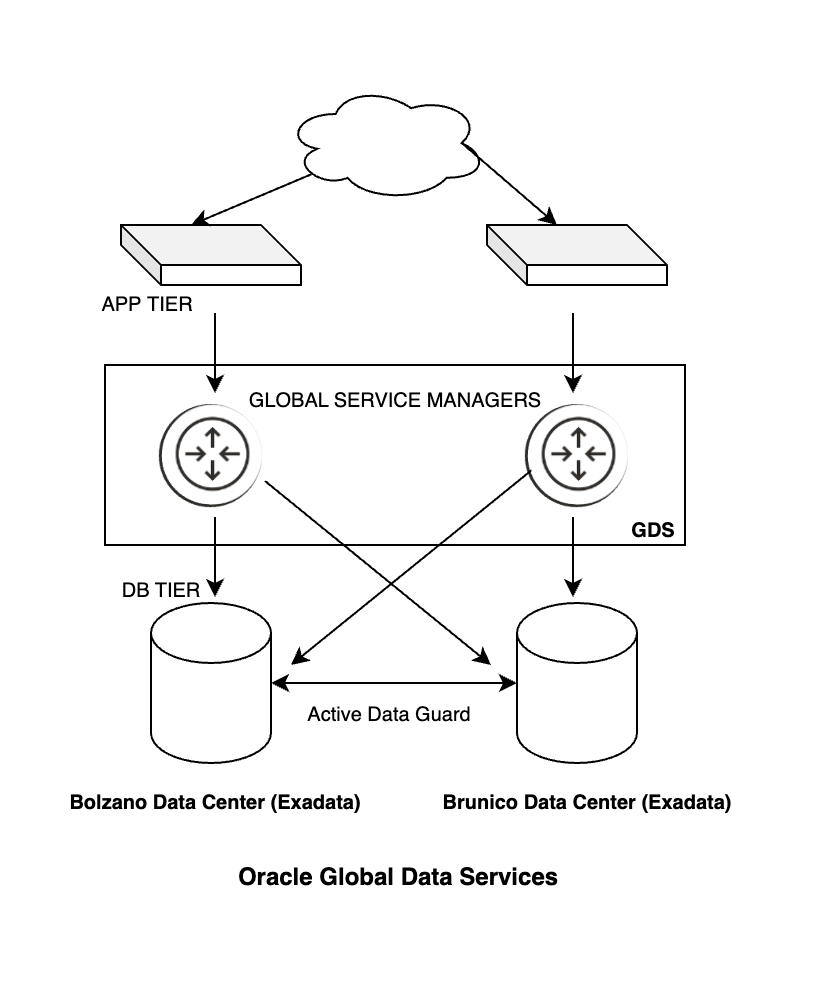Introduction: A Vision for Seamless IT Operations
While high availability is essential for all organizations in today’s digital world, it is especially critical for public sector institutions, as they deliver essential services that citizens and government operations depend on every day. One such organization, a leading IT service provider for a regional public administration in Italy, embarked on a journey to modernize its database infrastructure. Managing over 340 IT services across two state-of-the-art data centers, the organization needed a solution that would eliminate service disruptions during patching, simplify disaster recovery, and enable seamless failover – without the burden of manual interventions.
Faced with the complexities of maintaining database availability across multiple locations, they turned to Oracle Global Data Services (GDS) to create a resilient, high-availability architecture that would serve as the backbone of their IT ecosystem and reduce database downtime substantially.
Challenges: Overcoming High Availability and Disaster Recovery Complexity
Before adopting Oracle GDS, the organization faced several critical challenges:
- Primary/Standby Management Complexity: Moving workloads between their data centers (located in two different cities in Italy) during patching, upgrades, and unplanned outages, required manual connection string updates and DNS modifications, leading to downtime.
- Lack of Transparent Failover: In the event of an outage, failover was not automated, impacting service continuity and causing extended downtime.
- Operational Inefficiencies: Managing over 57 PDBs and 395 database services manually introduced significant administrative overhead.
As a mission-critical IT services provider for public institutions, the organization needed a more efficient and automated approach to ensure seamless database operations across their geographically distributed environment.
Solution: Oracle GDS for Automated Failover and Service Orchestration
To address these challenges, the organization deployed Oracle Global Data Services (GDS) across its two geographically distributed data centers.

Figure 1: Oracle Global Data Services Deployed Architecture
The implementation included:
- 6 Global Service Manager (GSM) servers deployed across the two regions (3×2)
- 7 database pools comprising 14 databases
- Automated failover with Oracle Active Data Guard
- Efficient service relocation across sites
Oracle GDS was configured to dynamically manage and distribute workloads, allowing database services to remain available even in the event of a disaster. The team leveraged role-based routing and automated failover to ensure that services were always available to users, regardless of events affecting the state of individual databases or their role changes.
Results: Enhancing Availability, Efficiency, and Disaster Recovery
Since implementing Oracle GDS, the organization has achieved:
- Minimal Downtime: Automated failover eliminated disruptions and ensures uninterrupted service availability for their customers.
- More Efficient Database Management: Centralized orchestration of the 395 global services reduced administrative workload substantially.
- Transparent HA/DR: GDS abstracted database locations, eliminating manual intervention for service redirection.
- Active Utilization of DR Site: With Oracle Active Data Guard, the Standby (disaster recovery) environment can now be actively leveraged for read-only workloads and business intelligence reports.
Additionally, the organization’s IT team is exploring new ways to use GDS to further streamline their patching and maintenance processes, further enhancing operational agility.
Looking Ahead: The Future of GDS in the Organization
With the successful implementation of Oracle GDS, this Italian IT Service Provider is now migrating additional database services to GDS-managed global services. Over the next six months, they plan to fully transition from locally managed to globally managed database services, further simplifying operations.
For this public sector IT provider, Oracle GDS has delivered on its promise—ensuring high availability, reducing operational complexity, and enabling seamless high availability and disaster recovery. As they continue to scale their IT infrastructure, Oracle GDS will remain a key component of their mission to deliver uninterrupted digital services to citizens.
As their head of database services puts it: “Oracle GDS has transformed the way we manage our databases.”
By adopting Oracle GDS, this organization has successfully revamped and modernized its database strategy, creating a foundation for continued growth, resilience, and efficiency in the digital era.
